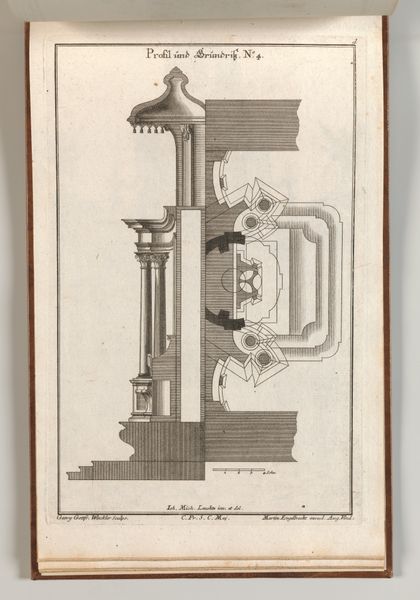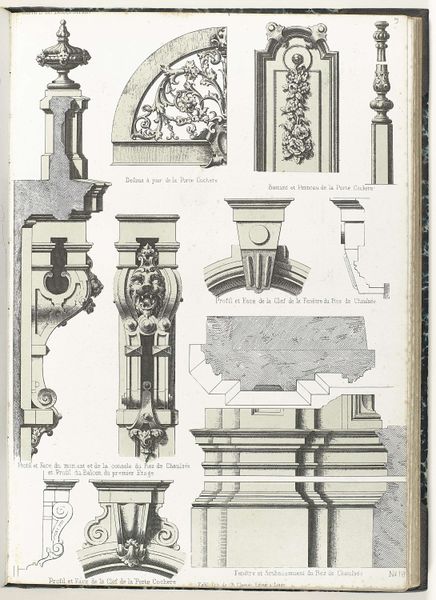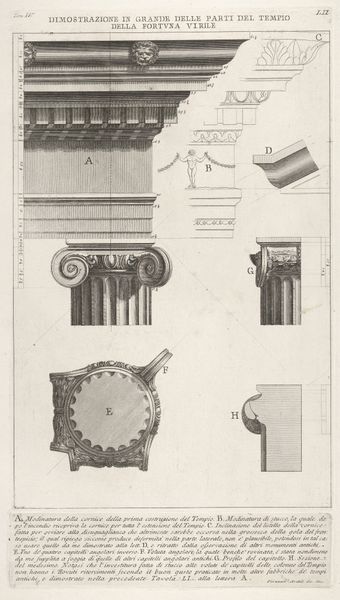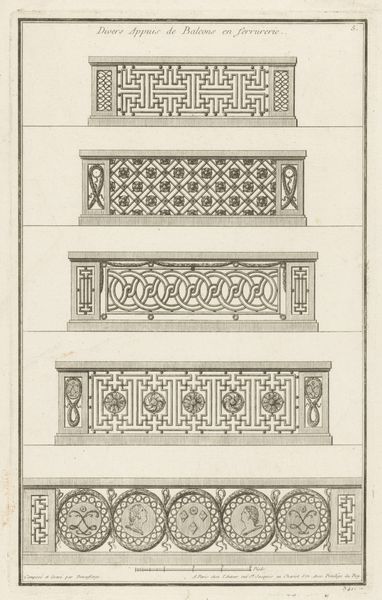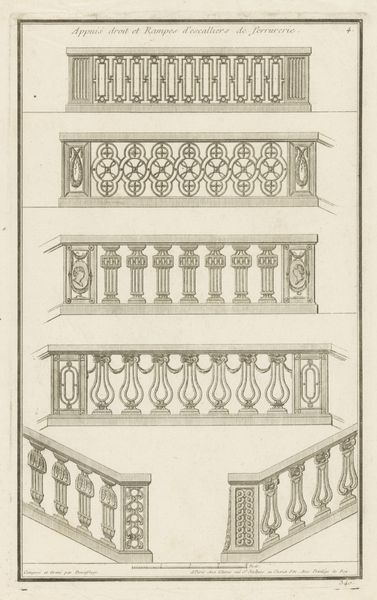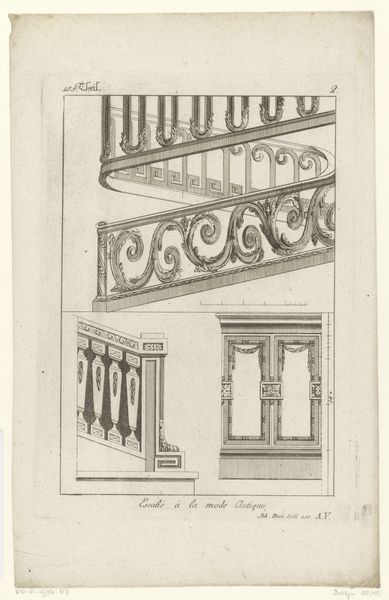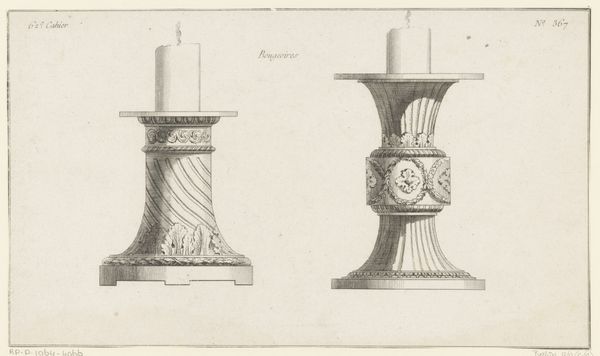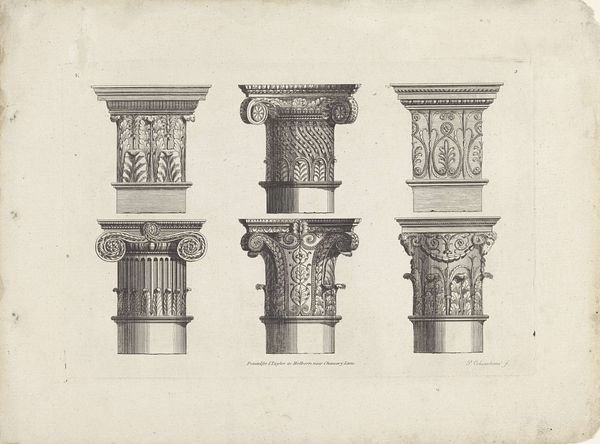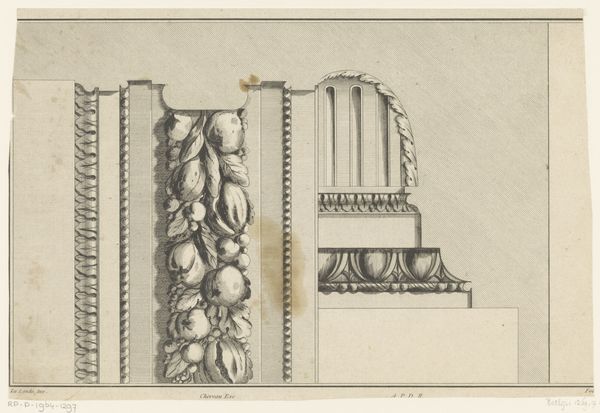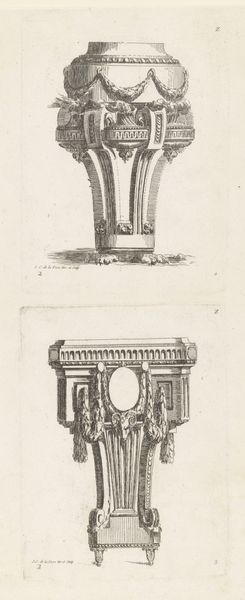
drawing, engraving, architecture
#
architectural sketch
#
drawing
#
neoclacissism
#
aged paper
#
quirky sketch
#
old engraving style
#
sketch book
#
personal sketchbook
#
idea generation sketch
#
sketchwork
#
line
#
sketchbook drawing
#
storyboard and sketchbook work
#
engraving
#
architecture
Dimensions: height 287 mm, width 178 mm
Copyright: Rijks Museum: Open Domain
Curator: We're looking at "Kerkbanken," or "Church Pews," an engraving by Johann Carl Schleich, dating back to 1780. It’s part of the Rijksmuseum's collection. Editor: My first impression is one of calculated elegance, and coldness too. It’s all so precise, so regimented in its lines, but devoid of human warmth. Curator: Precisely. Schleich's sharp lines delineate the Neoclassical forms. We see a meticulous arrangement of architectural elements – capitals, moldings, and the suggestion of supporting structures. Note the contrasts: the intricate carvings against the smooth surfaces, the light and shadow interplay. Editor: Yes, the contrast seems deliberately stark, doesn’t it? I'm curious about its place in society, actually. Was this meant as a functional guide for craftsmen? Were church pews at this period signs of status and who got to sit in them? Curator: Good questions. Architectural engravings like this were often circulated among artisans and patrons to disseminate stylistic trends, contributing to design language during that time. The Neoclassical style resonated with ideas about reason, order, and civic virtue that aligned well with the political atmosphere of the period, especially among the emerging merchant class. Editor: So, a blueprint of societal values, carved into the very fabric of their religious spaces? And who benefitted from these church seats? Curator: Exactly. The structured rigidity suggests both social and aesthetic control and yes, church seating often reflected the social hierarchies within a community. The wealthy may have had prime locations, closest to the pulpit, whilst those from a lower class might sit towards the back. This engraving presents ideal types stripped of everyday human messiness. Editor: Fascinating how a drawing so focused on form can still hint at these deeper social structures. I came to it, focusing on line, balance, and how well each little element was organized on the sheet of paper and I'm leaving contemplating status. Curator: Indeed, the artwork’s beauty invites further reflections. Thank you for your observations!
Comments
No comments
Be the first to comment and join the conversation on the ultimate creative platform.

